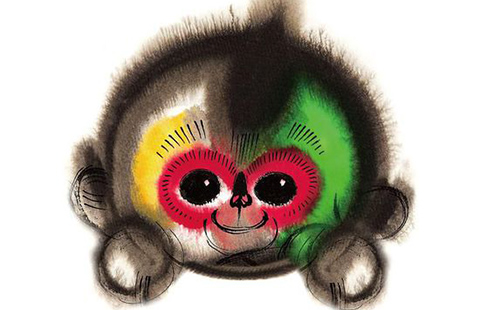Jinshan's finest produce
Updated: 2016-01-23 00:00
By zhang kun in Shanghai(China Daily USA)
|
||||||||
Yan Junjie has not been a farmer for more than ten years, but given his current profession and its intricate ties to farming, he reckons he can be considered a peasant.
 |
|
Artworks by Qiu Jianguo depict village life and local traditions in rural Shanghai. PHOTOS ROVIDED TO CHINA DAILY |
Yan is actually an artist who specializes in a very unique sort of craft that has been categorized as peasant art, which originated from the suburban Shanghai district of Jinshan. These sort of art works are typically colorful and they depict a wide range of subjects, from water town landscapes to family gatherings to distinctive elements of Chinese culture and tradition.
Yan and his wife Li Huihong, also an artist, now run a painting studio at a tourism center in Zhonghua village of Zhujing town in Jinshan. Their works have gained them some fame over the years. In their studio, an old photograph of Yan standing next to Chinese President Xi Jinping is placed in a prominent position for everyone to see.
"Mr Xi was the Party secretary of Shanghai when he visited us here, and I created a piece for him and his wife. He really liked it," said Yan.
Jinshan is today so well known for producing good peasant art that Fengjing, one of its towns, built a painters' village as a tourist and cultural attraction. Peasant art has become so deeply ingrained in the lives of Jinshan's residents that many are starting to learn the ways of the craft from local master artists.
Yan, for example, is teaching peasant painting to dozens of children in the town.
"It's not professional training. It's just for children to have fun and learn about our own culture," said Yan, who emphasized that there are no theories or guidelines to follow in peasant art.
A new art form
This art form is believed to have been popularized in the 1970s by Wu Tongzhang, an artist from Jinshan who once ran a school teaching people how to produce aesthetically pleasing folk art.
As food has always been an integral part of Chinese culture, people living in the Yangtze Delta region used to be known for decorating their kitchens with elaborate works of art. The wall behind the stove was typically where people would place their art works, and new home owners would casually request their fellow neighbors to help paint a motif on this space.
Such paintings would range from fighting scenes from ancient folklore to famous characters from Chinese fables and fairy tales. Floral patterns and other simple artistic compositions that have auspicious meanings are often painted on the lower parts of the wall in front of the stove.
Wu, a retired army officer, is said to have been so inspired by these simple works of folk art, including paper cutting and embroidery art, that he decided to gather a group of peasant artists to teach them how to paint on paper instead of walls.
"What he did was not really teaching, but more like guidance and inspiring," said Chen Wei, one of Wu's students who is now an advocate of peasant art as well as other cultural products of Jinshan district.
"There was this woman who only knew how to do embroidery and Wu just told her to use the pen as she would her needle and to treat the paper as a piece of silk," Chen added.
Chen has recently brought together about two dozen paintings from peasant artists, which will be showcased at an exhibition that's being held in celebration of the Lunar New Year. This exhibition, which is taking place at the Zhu Qizhan Art Museum in downtown Shanghai, will run from Jan 28 to the end of February.
- Netizen backlash 'ugly' Spring Festival Gala mascot
- China builds Mongolian language corpus
- China's urban unemployment rate steady at 4.05 pct
- German ecologist helps relieve poverty in Sichuan
- 'Unhurried' Guizhou village makes NY Times list of places to visit
- Railway police nab 40,315 fugitives in 2015
- 7 policemen, 3 civilians killed in Egypt's Giza blast
- Former US Marine held in Iran arrives home after swap
- Powerful snowstorm threatens US East Coast; flights canceled
- 2015 Earth's hottest year on record: US agencies
- 8 killed in car bomb near Russian Embassy in Kabul
- Researchers find possible ninth planet beyond Neptune

 Art exhibitions in 2016 worth seeing
Art exhibitions in 2016 worth seeing
 Winter flexes its muscles as cold snap makes its way
Winter flexes its muscles as cold snap makes its way
 Bright Temple of Heaven shines in winter
Bright Temple of Heaven shines in winter
 Netizen backlash 'ugly' Spring Festival Gala mascot
Netizen backlash 'ugly' Spring Festival Gala mascot
 Egyptian welcome for Chinese President Xi Jinping
Egyptian welcome for Chinese President Xi Jinping
 Robots reads China Daily to stay up to date with news in Davos
Robots reads China Daily to stay up to date with news in Davos
 China's Yao honored with Crystal Award in Davos
China's Yao honored with Crystal Award in Davos
 Happy memories warm the winter
Happy memories warm the winter
Most Viewed
Editor's Picks

|

|

|

|

|

|
Today's Top News
National Art Museum showing 400 puppets in new exhibition
Finest Chinese porcelains expected to fetch over $28 million
Monkey portraits by Chinese ink painting masters
Beijing's movie fans in for new experience
Obama to deliver final State of the Union speech
Shooting rampage at US social services agency leaves 14 dead
Chinese bargain hunters are changing the retail game
Chinese president arrives in Turkey for G20 summit
US Weekly

|

|








